5 Self-Publishing Mistakes to Avoid
Today’s guest post is by Dave Chesson.
There’s a lot to know when starting out in the self-publishing business. I cringe when looking back at some of the rookie mistakes I made when I was publishing my first books. But, then, you won’t master self-publishing without putting in the work to get there.
Don’t get me wrong—mistakes are a part of the journey, and they’re okay to make. But, hey, if you can get advice and save the hassle, that’s a good thing too.
In this post, we’ll explore a few errors to avoid when publishing your first book.
- Not Reading in Your Genre
While it’s tempting to find untapped niches and write books to match, it’s a huge mistake to write books in genres you don’t know a lot about. Sure, as an author, it pays to read a wide range of books; but to be successful, you should read plenty of books in your chosen genre.
It is important to keep in mind that you’re not writing for yourself or for your career; you’re writing for an audience. You may not be well read in your genre, but your audience will be. They’ll be purchasing your book based on the fact it’s a “Western” or a “sci-fi” novel and will have expectations to match that genre. You need to understand what those readers are looking for when they buy a book—otherwise, expect some not-so-great reviews.
The only way you can learn about these reader expectations—and how to reach them—is to be well read in your genre. That way you’ll be able to see where these unwritten genre “laws” should and shouldn’t be bent. Just as a master woodworker knows how to work a particular type of wood, a master writer can mold the fundamentals of a genre and bring in fresh ideas to delight readers.
When reading books in your chosen genre, note down any tropes you encounter. In romance, for example, these may be alpha male, second chance, last-chance romance, secret baby, and so on. You’ll notice that a lot of books have these tropes baked right into their blurbs. Keep an eye out for them because meeting some of these tropes will help you meet your readers’ expectations.
- Publishing Too Soon
If there’s a widespread fault in self-publication, it is that too many books are released too early. Accomplished people in the field of publishing continuously encourage self-publishers to support their writing with both copyediting and story editing.
The truth is, it’s hard to edit your own work properly. And there’s always a temptation to get all the relevant sections into your book, toss it through a spell-checker, and unleash it into the wild. But by publishing too early, your name may have a lifelong association with sub-par work. No one writes a perfect first draft. Sure, it’s nice to think you may be in that .0001% that can get really close on the first try, but it’s probably safe to assume you’re with the majority of us.
In Malcolm Gladwell’s book Outliers, he says that it takes 10,000 hours of work to reach your potential. While there is some debate on the validity of that claim, it’s commonly agreed upon that you need to work hard and make a lot of mistakes at something to eventually get good at it. Writing is no different. Use that extra time to get better at your craft, and get an editor in to help you along the way.
It can be easy to think of editing time as a curse, but it’s a blessing. Now you can make all of your mistakes in private with absolutely no repercussions.
Keep in mind, though, that you don’t need every single little thing perfect. If you’re looking for perfection, you’ll never release anything. It is highly unlikely that someone will throw your book down in disgust because you’ve used a dangling modifier in the third chapter, but you’ll need to make sure your story is well structured and compelling.
- Not Having a Mailing List
A mailing list is one of the most important assets you can have as a self-published author. Without an email list, you’ve basically got to start your marketing efforts from scratch every time you release a new book.
While there are plenty of ways to build an email list, here we’ll focus solely on building your list with your books. Luckily, Amazon makes it incredibly easy for you to build an email list—you can place a link for readers to subscribe in the back of your ebook. Even better, links are completely clickable on most platforms, so a reader can go from your book straight to a web page.
Also, instead of simply adding a “join my email list” link in your book, you should look to create a unique lead magnet for your readers. A lead magnet is a compelling freebie that you give away to those who sign up, and it can significantly increase the number of people who choose to join your email list.
Fiction authors can use a bunch of different resources like character profiles and extra-short stories as a lead magnet, but arguably the most effective is using a free book or short story as a giveaway.
Sci-fi author Jamie McFarlane has a link at the start of his book Junkyard Pirate to sign up for his newsletter and download a free book.
For author Chris Fox, the only clickable link in his book points to his home page, which, in turn, leads to his three lead magnets—all free books.
If you’re a non-fiction author, you can create a range of info products to generate leads. Pat Flynn’s Will It Fly included a complimentary companion course that mirrored the steps from the book. You can easily do the same using free and paid course creation platforms.
- Not Doing Keyword Research
A mistake many beginning authors make is either not knowing about, or not using, keywords.
A keyword is an expression that people type into a search bar when looking for something online—mostly via a search engine or, in your case, Amazon.
You can use these keywords to inform your book titles, subtitles, marketing copy, ads, and the seven keywords you pick when listing your book. By finding the right keywords, you’ll target the exact phrases and words your ideal readers are searching for when looking for their next book.
Now, when it comes to finding keywords for your book, there’s quite a lot to learn—and it is definitely something you should look into before publishing your book. However, it is important to know that there are two main ways to conduct keyword research: either manually or with a tool.
As with everything, both have their pros and cons. If you decide to do it yourself, keyword research is time-consuming but cost-effective (in this case, free). But you will miss out on a lot of added data—like knowing how many times a month a particular word is searched for on Amazon. The tool I designed, Publisher Rocket, performs your keyword research in a matter of seconds—as opposed to a matter of hours.
- Not Having a Professional-Looking Book Cover
Our final self-publishing mistake is showing a lack of professionalism with your cover. The visuals of your book play a huge part in sales and reader engagement. It cannot be understated just how important a book cover is to the success of your book. You could write an absolute page-turner, but if it has a poor cover, nobody will read it.
If you’re looking for a professional book cover, there are a few ways you can get one.
Obviously, DIY-ing your cover is the cheapest option depending on the tool you use. However, as with the editing, you’re probably best leaving it to the professionals.
Premade covers are usually cost-effective. Basically, cover designers create a range of covers for hypothetical books and list them for sale. Once you purchase, the design is customized to add your details (name, title, etc.). Depending on where you go to buy covers, they could be in the range of $50 to over $150, and the quality can be great—certainly a lot better than I could do.
When it comes to which pre-designed book cover sites are best, it depends on your book. I’d suggest shopping around, but don’t take too long because once a cover is sold, it’s gone! Here are a few of my favorite sites to find pre-designed book covers.
- The Cover Collection
- The Book Cover Designer
- Rocking Book Covers
- Kingwood Creation
- Premade eBook Cover Shop
- Creative Paramita
- Self Pub Book Covers
- Go On Write (Had to add my choice—I’ve used this site for many of my covers ~ C. S.)
Another way to get a cover is to find a designer to create a custom design. A lot of the sites I listed above also do custom designs for covers, but they’re usually more expensive than the pre-designed option.
Freelance marketplaces like Upwork have plenty of cover designers waiting to be discovered.
If you want quality, 99Designs is a great site for finding designers to create custom covers. All you have to do is submit your design brief and designers from all over the world will send you proposals and mock-ups. After a week, you choose your favorite, and that designer gets paid. The results from 99Designs are usually high quality, which is good because it can be quite expensive compared to other options. (I’ve used this site too and was super happy with the designs, from which I chose a book cover ~ C. S.)
Final Thoughts
It’s important to remember that everyone makes mistakes when they’re first starting out in the self-publishing process. That’s okay! However, the five errors listed above can be avoided with some planning and patience. I say, skip the hassle whenever you can and do it right the first time.
Cheers!

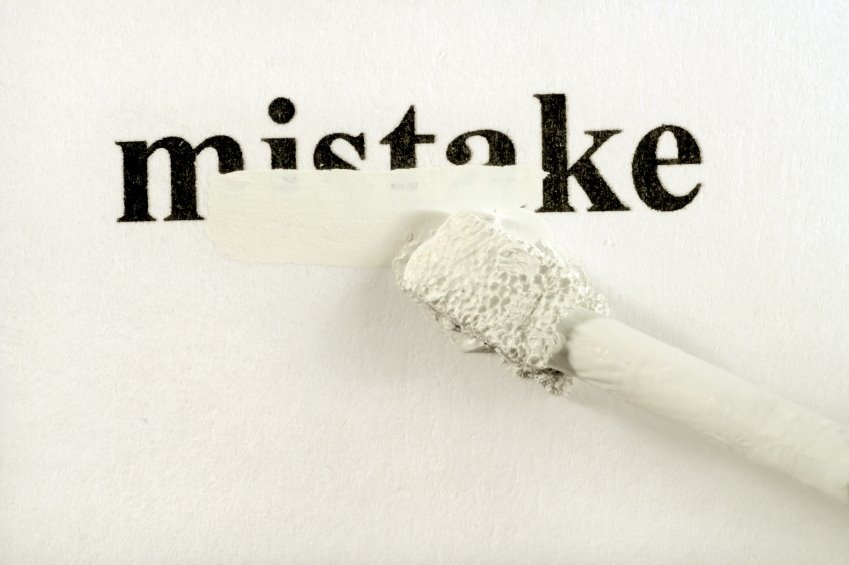
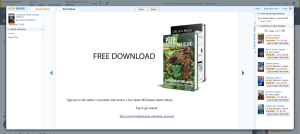
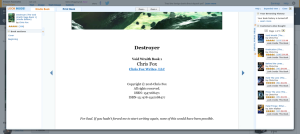
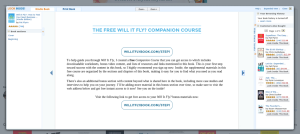
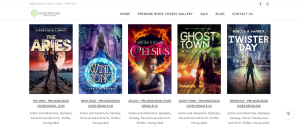
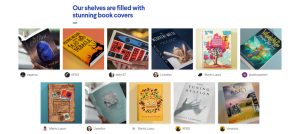










Hi!
Thank you for mentioning my website and premade book covers as one of the faves! Awesome to hear. Highly appreciated.
Hopefully, more articles like this will help eliminate bad covers. Premades are an amazing deal for that.
I made the mistake of not having a mailing list established. How does one build an email list without first publishing their book? I just published my in January and I have four people to date. Your tip for a lead magnet is helpful, but I need a lot more help with this. If you’ve already posted about this, please share a link. Or share a link to another resource. Thanks! Self-publishing was easy compared to self-marketing.
Hi Dawn, great question. I dont’ have any resources for those who haven’t published before. Most of my focus was on how to convert readers into subscribers to help with future book sales or further sales beyond books.
However, with regards to an email list without a product, there are a couple of things:
1. If you are building a street team or have people you know will help with promotion upon launch, put them in your email list
2. Depending on your subject, if there are forums on your subject, or FB groups, that might be a great place
Some people might say do ads or things like that, but I wouldn’t. Not if you don’t have a product and this is your first book.
Hey Dawn, I, like many authors, created a specific book (a novella) to give away as a lead magnet to my list. I use Lead Pages to create the landing pages to opt in (see https://cslakin.lpages.co/charlene-whitman-list-opt-in/ for example). I used to do FB ads to offer the free book to my list but for personal reasons I won’t support FB anymore. However, using other social media, like Pinterest and Twitter, I still offer the free book and get people on my list. There are lots of posts out there to give you ways to build your list!
I am currently preparing to self-publish my book, so this is great! Thanks for the tips!
Do you have any advice or articles about how to bounce back from making any of the mistakes you list here?
I made the mistake of premature self-pub when I was a teen. (un/)Luckily I only did a hard copy edition and it was before ebooks really took off! *phew*